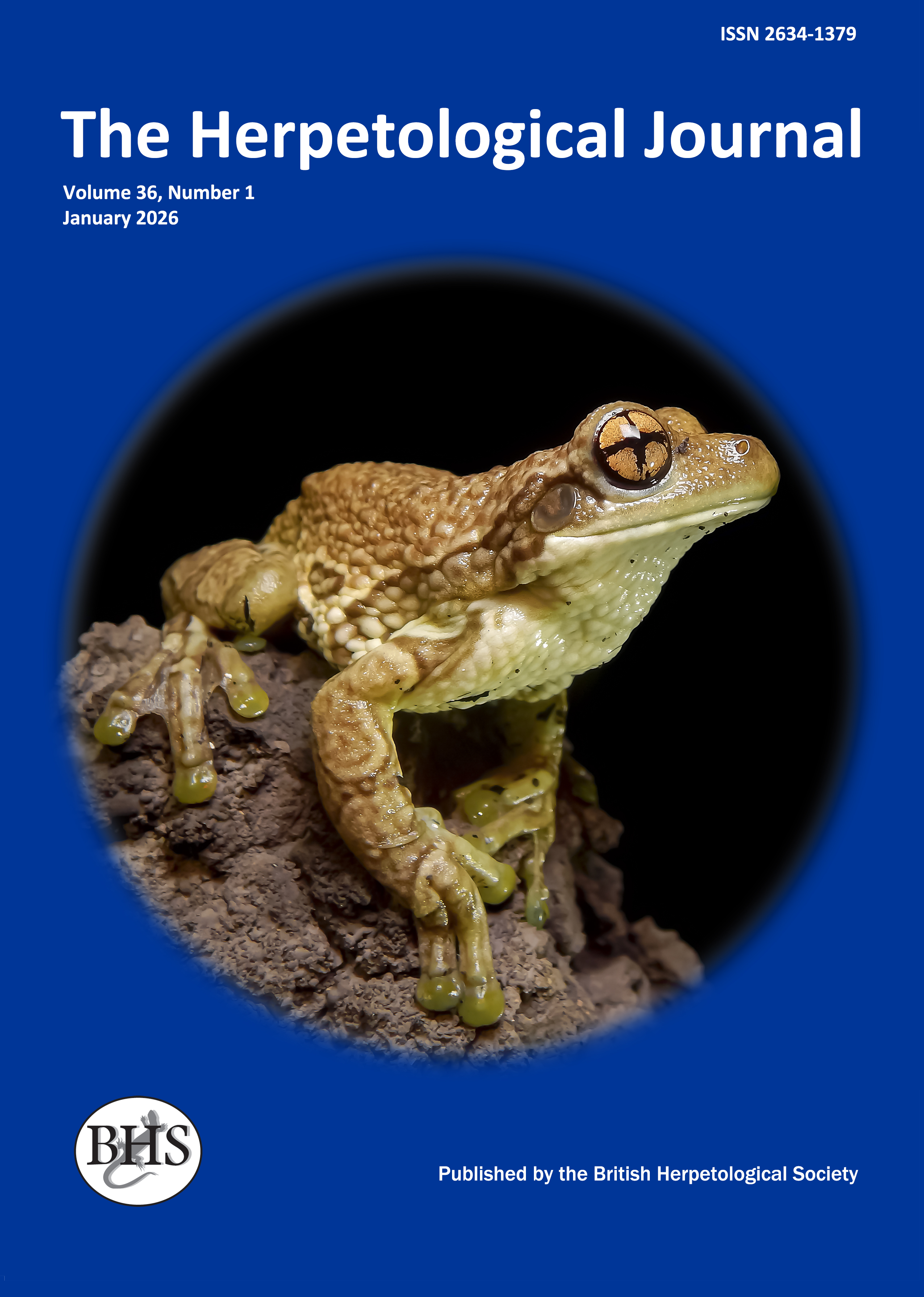
The Herpetological Journal
The Herpetological Journal is the Society's prestigious quarterly scientific journal. Articles are listed in Biological Abstracts, Current Awareness in Biological Sciences,Current Contents, Science Citation Index, and Zoological Record.
ISSN 0268-0130
2023 Impact Factor for the Herpetological Journal is 1.1, with the Journal sitting just below Quartile 2 in Zoology, at percentile 46.9
pdf 02.Factors contributing to the biodiversity value of an archaeological landscape in Jordan
630 downloads
Open Access
DOI: https://doi.org/10.33256/32.3.102108
pp. 102-108
Authors: Omar Attum, Sufian Malkawi, Nashat Hamidan
Abstract: Archeological landscapes are important places because they protect areas of historical importance, shape cultural and national identity, are recreational spaces, and vital sources of tourism revenue. Archaeological landscapes have the potential to assist in reptile conservation. The objective of this study was to compare the diurnal reptile richness of an archaeological site to the reptile richness of a nature reserve (treatment control for biodiversity value) and a modern olive grove (treatment control for poor biodiversity value). Our results suggest that archaeological landscapes provide valuable reptile habitat, as our archaeological site supported similar reptile richness as the natural site, with both sites having higher species richness than the modern olive tree farm. The high reptile richness and densities were the result of high potential food availability and habitat mosaic of relatively low tree density and open areas with exposed, tall, rocky ruins. Reptile richness had a negative relationship with tree density. The ruins and high food availability of the archaeological site supported higher densities of saxaphilic lizard species as the density of these species increased as mean maximum rock height and percentage of green ground vegetation cover increased. Promoting the reptile richness of archaeological sites provides another justification for the protection and visitor appreciation for archaeological sites as places of historical, cultural and biodiversity importance.
Keywords: Stellagama stellio, Ptyodactylus puiseuxi, reptile richness, rock outcroppings, vegetation greenness indices

